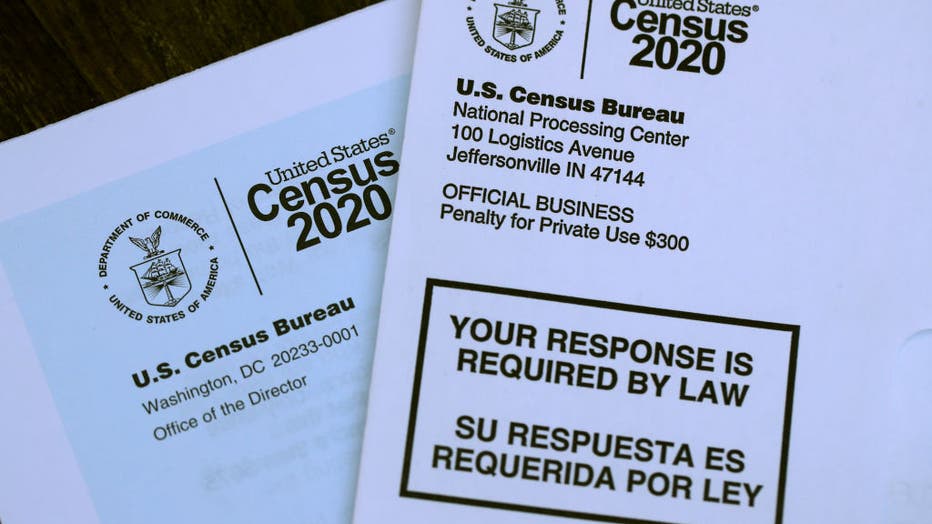Census data shows US is diversifying, White population declining
WASHINGTON (AP) - The Census Bureau on Thursday issued its most detailed portrait yet of how the U.S. has changed over the past decade, releasing a trove of demographic data that will be used to redraw political maps across an increasingly diverse country.
The census figures have been eagerly awaited by states, and they are sure to set off an intense partisan battle over representation at a time of deep national division and fights over voting rights. The numbers could help determine control of the U.S. House in the 2022 elections and provide an electoral edge for the next decade. The data will also shape how $1.5 trillion in federal spending is distributed each year.
The figures show continued migration to the South and Southwest and population losses in the Mississippi Delta and Appalachia. The numbers also indicate that the white population is aging and has fallen to its smallest share of the total population on record, though there are some exceptions. The share of the white population actually grew in coastal communities in the Carolinas and Virginia, as well as in counties stretching through the midsections of Georgia and Alabama. The population under age 18 is increasingly diverse.
RELATED: Worries about 2020 census' accuracy grow with cut schedule
The data comes from compiling forms filled out last year by tens of millions of Americans, with the help of census takers and government statisticians to fill in the blanks when forms were not turned in or questions were left unanswered. The numbers reflect countless decisions made over the past 10 years by individuals to have children, move to another part of the country or to come to the U.S. from elsewhere.
The release offers states the first chance to redraw their political districts in a process which is expected to be particularly brutish since control over Congress and statehouses is at stake. It also provides the first opportunity to see, on a limited basis, how well the Census Bureau fulfilled its goal of counting every U.S. resident during what many consider the most difficult once-a-decade census in recent memory.
Even before it began, the headcount was challenged by attempted political interference from the Trump administration’s failed efforts to add a citizenship question to the census form, a move that critics feared would have a chilling effect on immigrant or Hispanic participation. The effort was stopped by the Supreme Court.
The information was originally supposed to be released by the end of March, but that deadline was pushed back because of delays caused by the coronavirus pandemic.
The start of the 2020 census for most U.S. residents coincided with the spread of the coronavirus last year, forcing the Census Bureau to delay operations and extend the count’s schedule. Because census data is tied to where people were on April 1, 2020, the numbers will not reflect the loss of nearly 620,000 people in the U.S. who died from COVID-19.
On top of the pandemic, census takers in the West contended with wildfires, and those in Louisiana faced repeated hurricanes. Then, there were court battles over the Trump administration’s effort to end the count early that repeatedly changed the plan for concluding field operations.
Back in April, the Census Bureau released state population totals from the 2020 census showing how many congressional seats each state gets.
"Certainly, the pandemic played a big role, but we can’t forget the political interference we saw," said Terry Ao Minnis, an official with Asian Americans Advancing Justice, an advocacy group. "I think we know that all has played a role in whether people participated or not, whether it was from fear created about participating or sheer confusion about, ‘Who is at my door? ... Should I not open my door because of COVID? Should I not open my door because of the government?’"

The U.S. Census logo appears on census materials received in the mail with an invitation to fill out census information online on March 19, 2020, in San Anselmo, California. (Photo Illustration by Justin Sullivan/Getty Images)
Communities of color have been undercounted in past censuses. The Census Bureau likely will not know how good a job it did until next year, when it releases a survey showing undercounts and overcounts. But Thursday’s release allows researchers to do an initial quality check, and it could lead to lawsuits alleging that the numbers are faulty. The Census Bureau has a program that allows elected officials to challenge the data, but it does not apply to apportionment or redistricting.
"This is our first opportunity to see if there’s any indication of an unprecedented undercount," said Thomas Saenz, president of the Mexican American Legal Defense and Educational Fund (MALDEF). "There always is an undercount. This census will be no different, but our concern is to make sure this isn’t hugely out of proportion to undercounts we have seen in prior censuses."
For the first time, the numbers will not be entirely accurate at the smallest geographic levels due to a new privacy method used by the Census Bureau. The method inserts controlled errors into the data at small geographic levels, such as neighborhood blocks, in order to protect people’s identities in an era of Big Data.
Acting Census Bureau Director Ron Jarmin has warned that the process may produce weird results, such as blocks showing children living with no adults or housing units not matching the number of people living there.
This story was reported from Atlanta.

